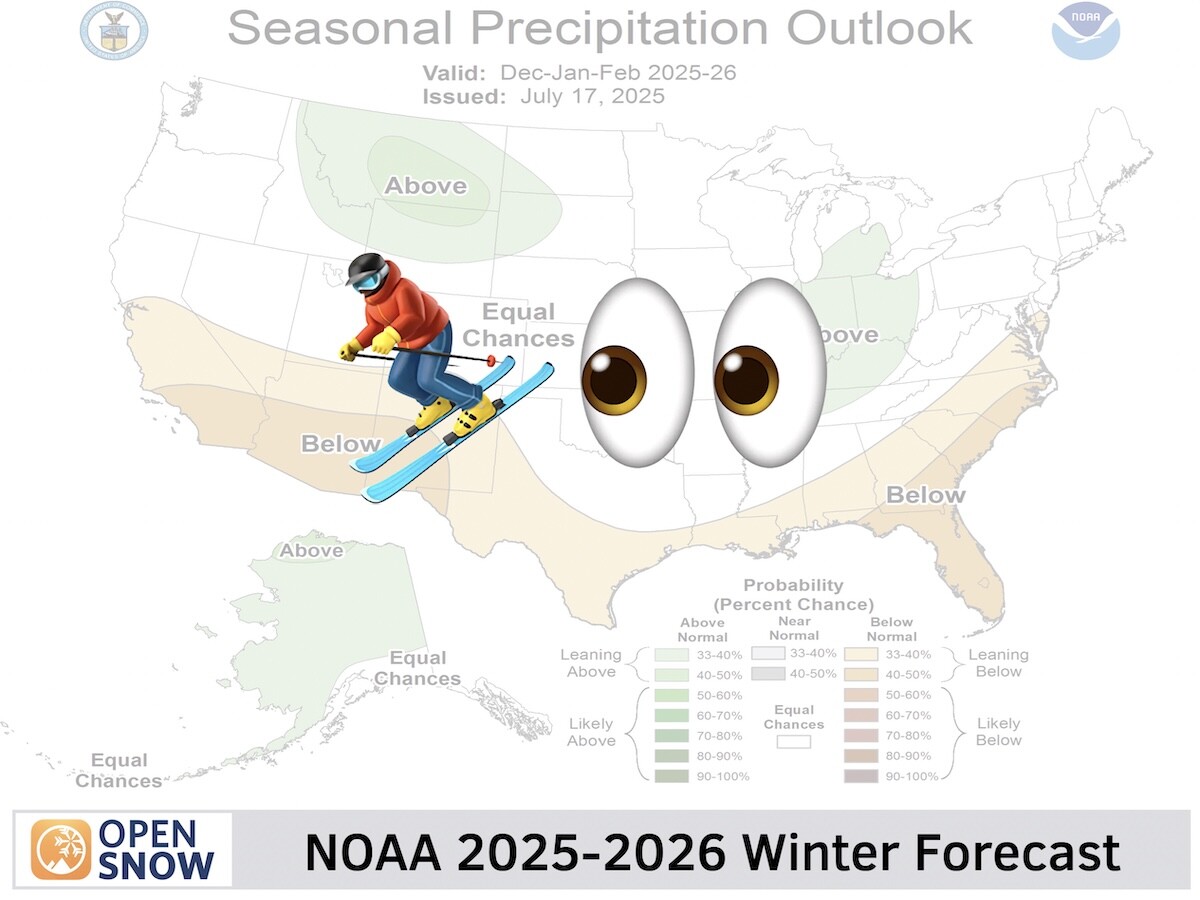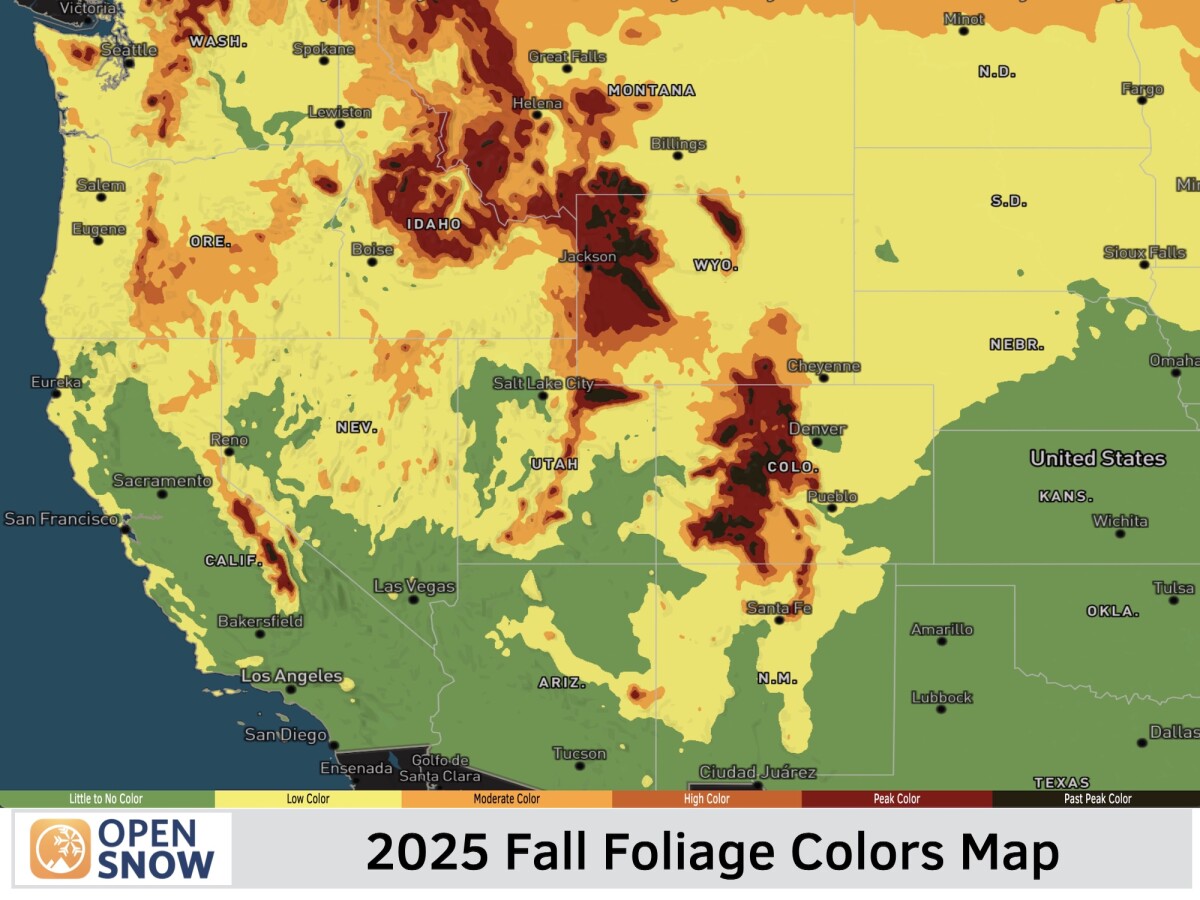News

By Alan Smith, Meteorologist Posted 2 hours ago August 5, 2025
July 2025 Review & August Outlook for the Western U.S.
July was warmer and drier than normal across much of the Southwest and Central Rockies thanks to a weak and inconsistent monsoon, while wetter conditions were observed in Eastern and Southern New Mexico.
California was much cooler than normal in July, and fire season has gotten off to a slower start there as a result. August is expected to be warmer and drier than normal for much of the West.
July 2025 Review:
July was a mixed bag across the Western U.S. with a trough-dominant pattern along the West Coast and Northern Rockies, while the Southwest experienced a weak and inconsistent monsoon.
Frequent troughing and cool ocean temperatures resulted in well below normal temperatures across most of California in July, especially along the coast.
Most of the Northwest (away from the immediate coast) and the Interior West experienced above-normal temperatures in July. The eastern side of the Continental Divide from Montana to New Mexico experienced near to in some cases below-normal temperatures thanks to frequent backdoor cold fronts.
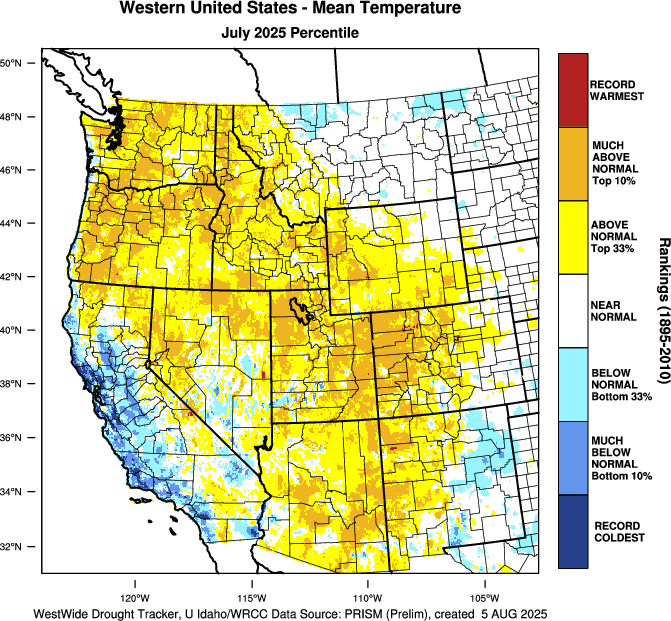
The North American Monsoon was very inconsistent, and at times non-existent, during July as the passage of low pressure troughs helped to quickly scour out any subtropical moisture intrusions.
As a result, rainfall was well below normal across most of the Southwest and Central Rockies. One exception was Eastern and Southern New Mexico, where moisture levels were higher and rainfall was above normal. The town of Ruidoso in New Mexico experienced multiple flash flooding events due to heavy rain falling on burn scars from last year's wildfires.
Further north, rainfall was a mixed bag. Western Washington and Oregon were drier than normal, while Central and Eastern Oregon were wetter than normal. Much of Montana, along with Eastern Wyoming and Eastern Colorado, also saw above-normal rainfall as frequent disturbances tracked across these areas.
Note that coastal and central valley areas of California average very little precipitation in July, so all it took was a small amount of rainfall for above-normal anomalies to show up here. The Tahoe region and Northern California did see some heavy downpours from thunderstorms, however.
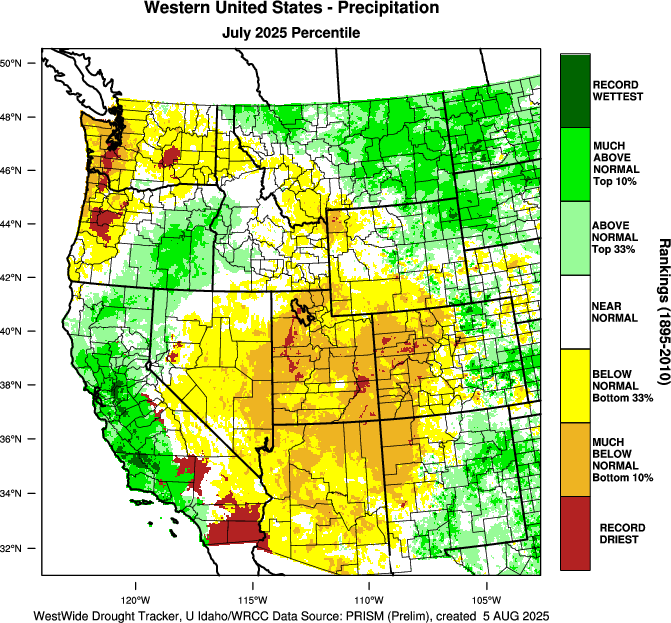
August 2025 Outlook:
High pressure ridging is expected to become the dominant pattern during August (aside from a strong trough early in the month), with above-normal temperatures expected for most of the West. The highest confidence of above-normal warmth is over the Southwest, which means scorching temperatures over the desert regions.
Coastal California is one exception where temperatures are expected to remain cooler overall, with equal chances of above or below normal temperatures according to NOAA's monthly outlook.
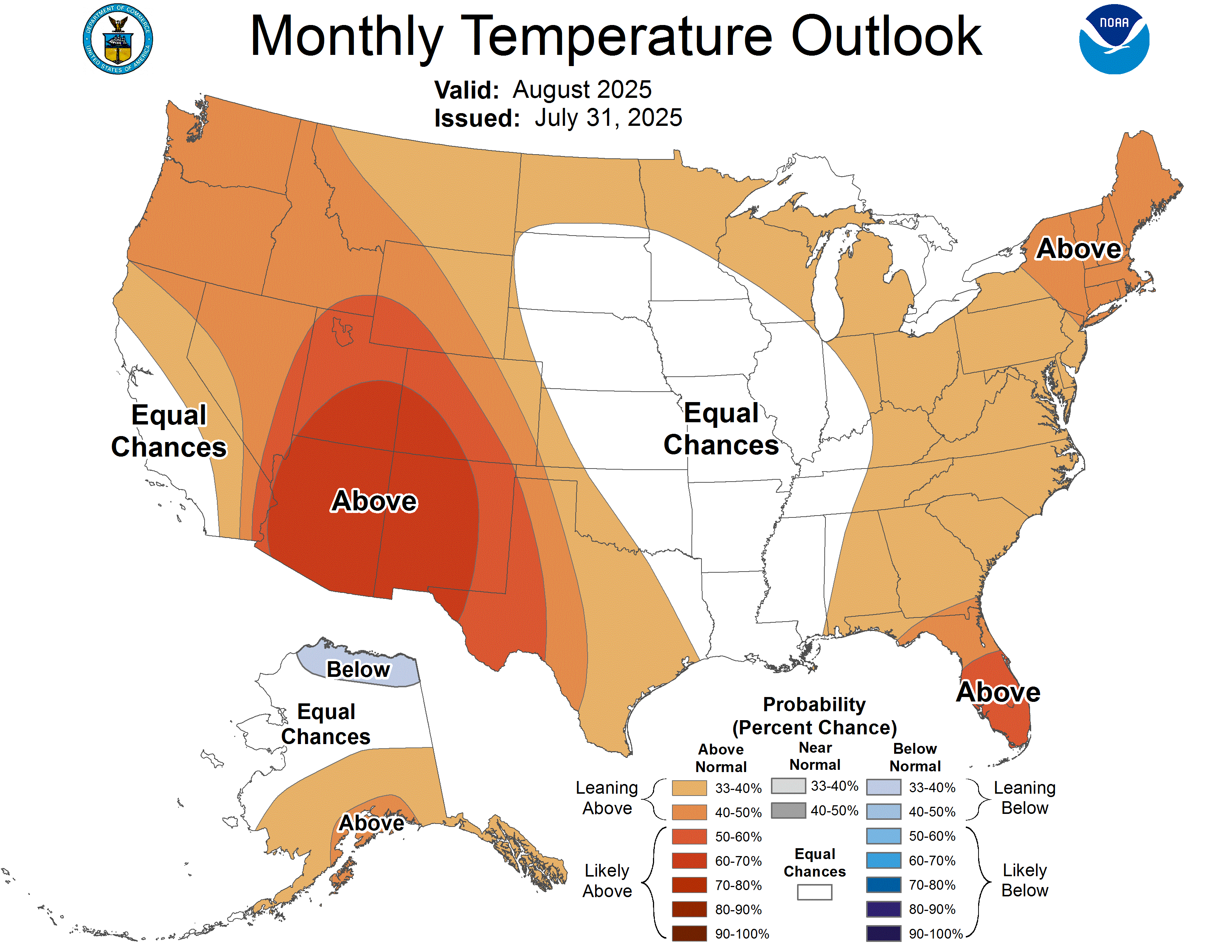
The monsoon is expected to remain weaker than normal for most of August, and below-normal rainfall is projected across most of the Southwest and Central Rockies as a result.
Across the Northwest and Montana, a soaking rain event is expected early in the month, with lower confidence in rainfall potential thereafter. NOAA's monthly outlook indicates equal chances for above or below normal rainfall across the Northwest and Northern Rockies.
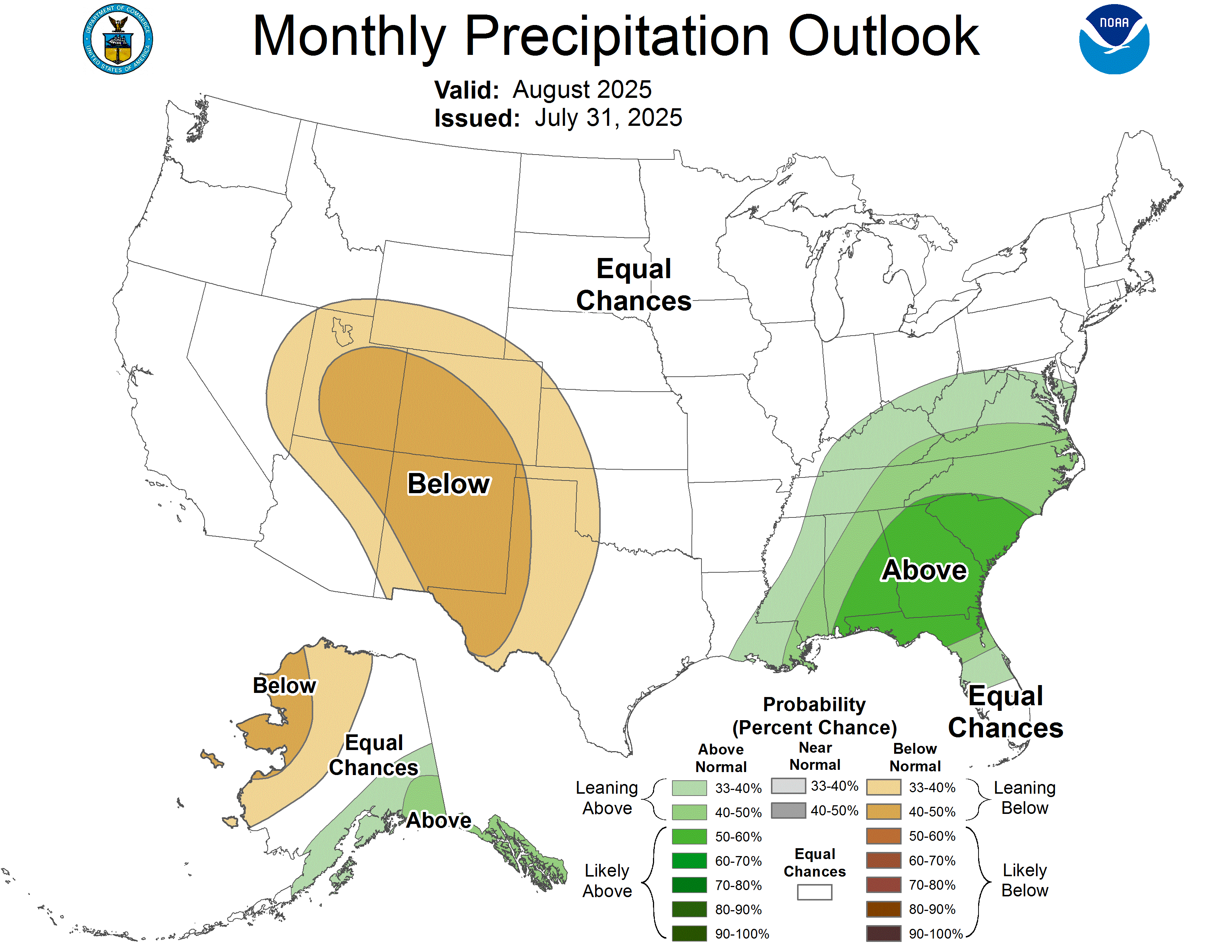
Wildfire Outlook:
During July, the most active wildfires occurred in Arizona, Utah, and Western Colorado, while California and the Northwest and Northern Rockies were relatively quiet in terms of wildfires and smoke.
Heading into August, we have already seen a recent uptick in wildfires across the Southwest and Southern California, with a few large fires also burning in the Northwest.
Above-normal potential for significant wildfires is projected for most of the West during August, with hotter and drier conditions anticipated.
However, Northwest Montana, including Glacier National Park, has below-normal potential for significant wildfires thanks to abundant rainfall in July. "Normal" potential is forecast for the Eastern Rockies from Colorado to New Mexico.
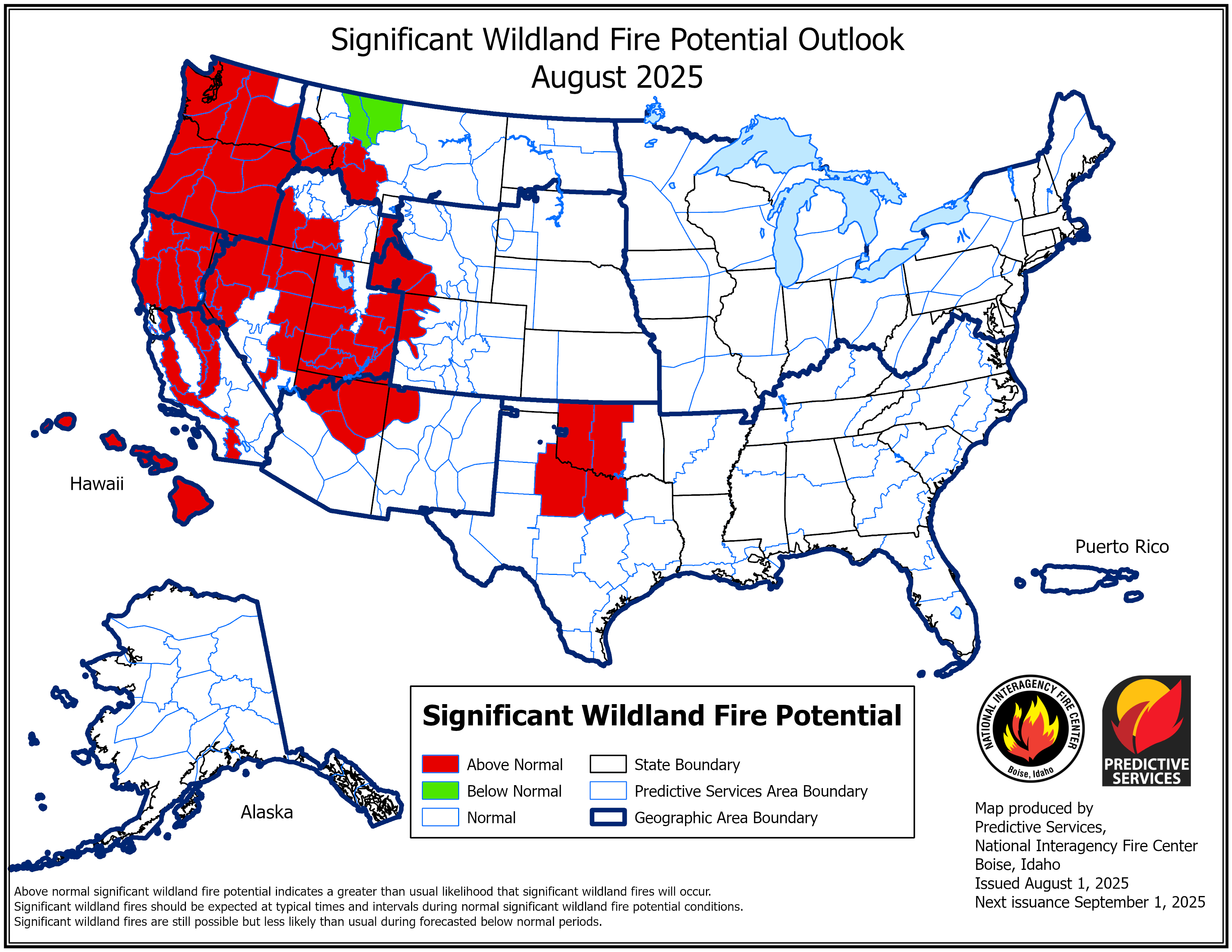
Thanks so much for reading! The next monthly weather outlook will be posted in early September.
Alan Smith
About The Author


